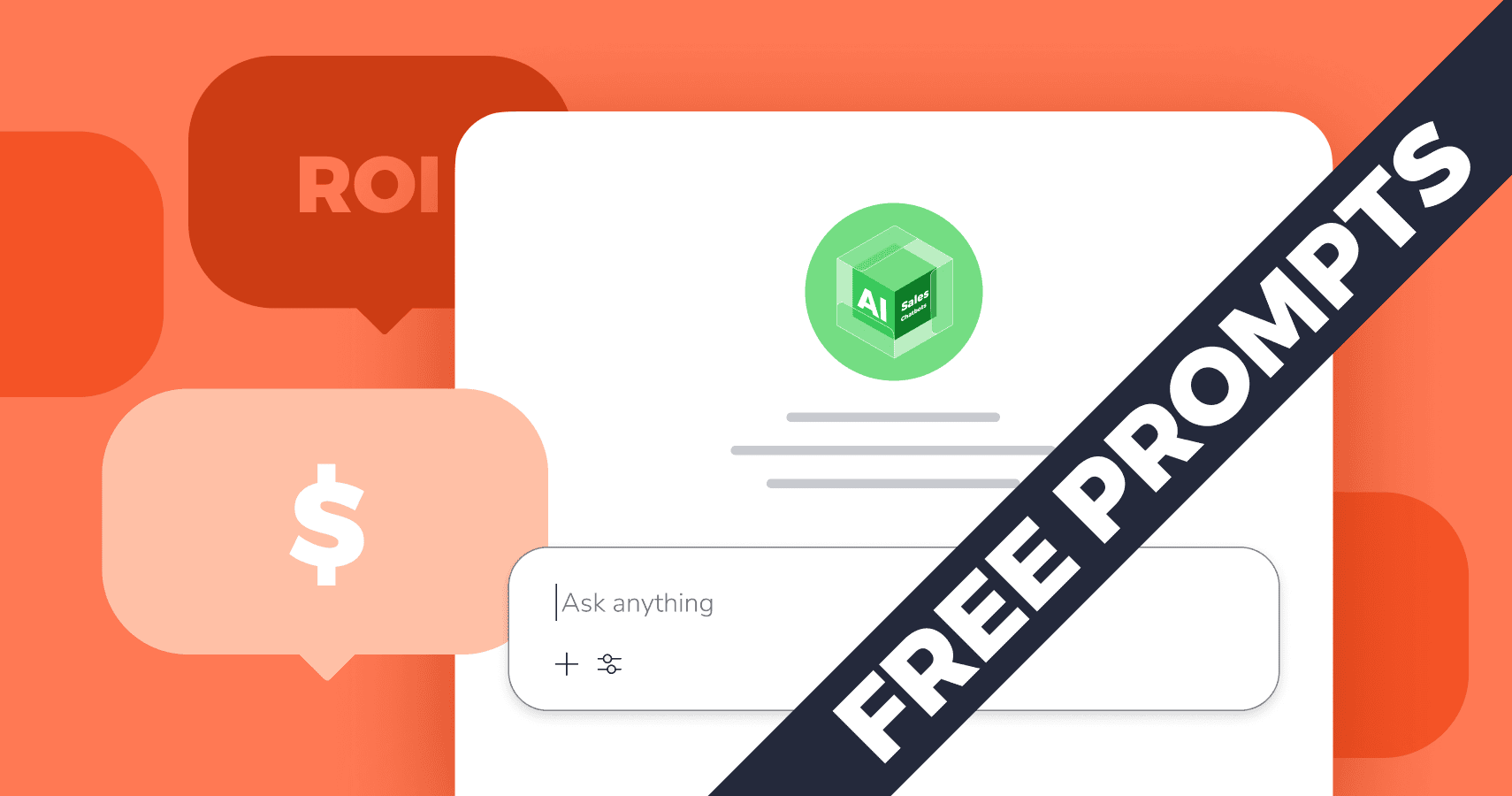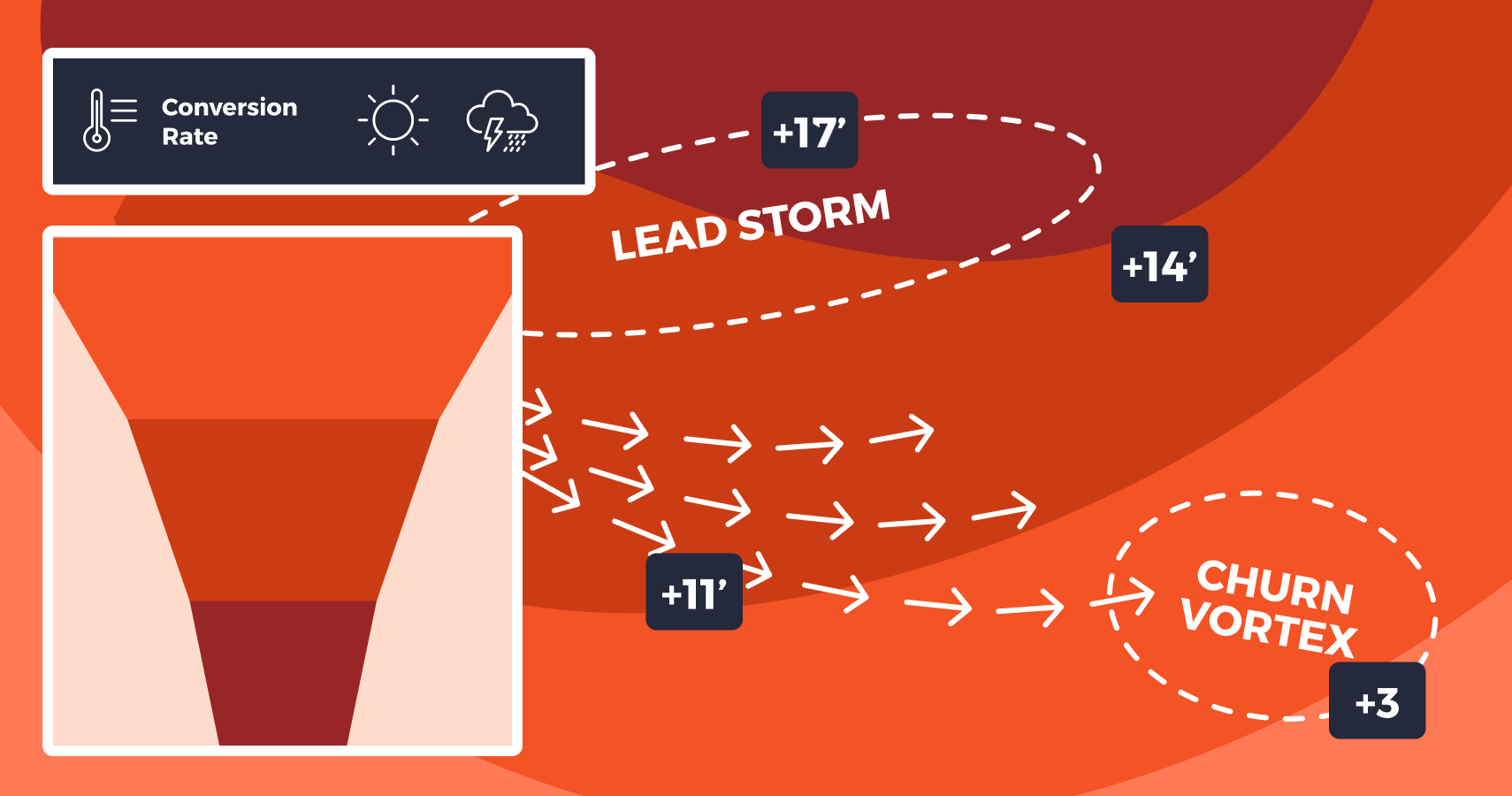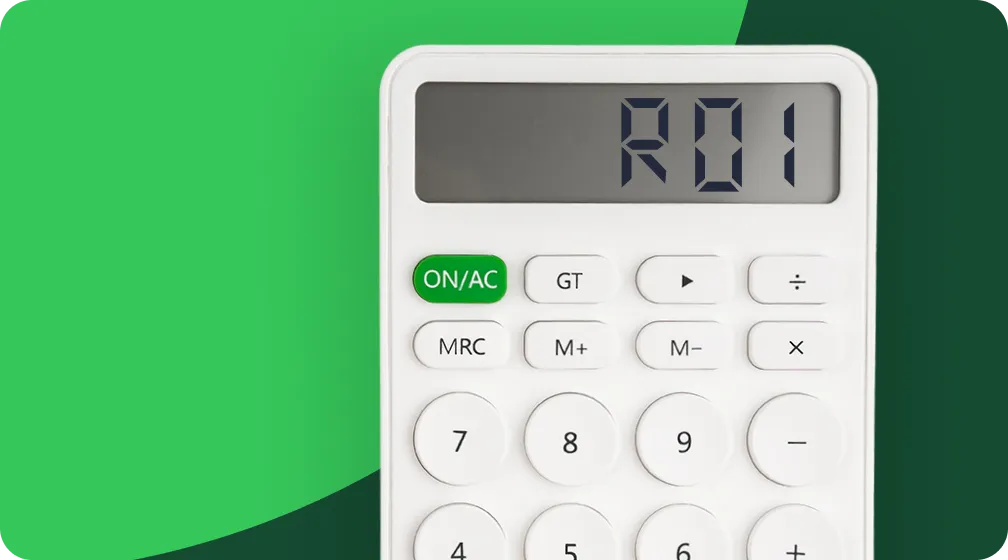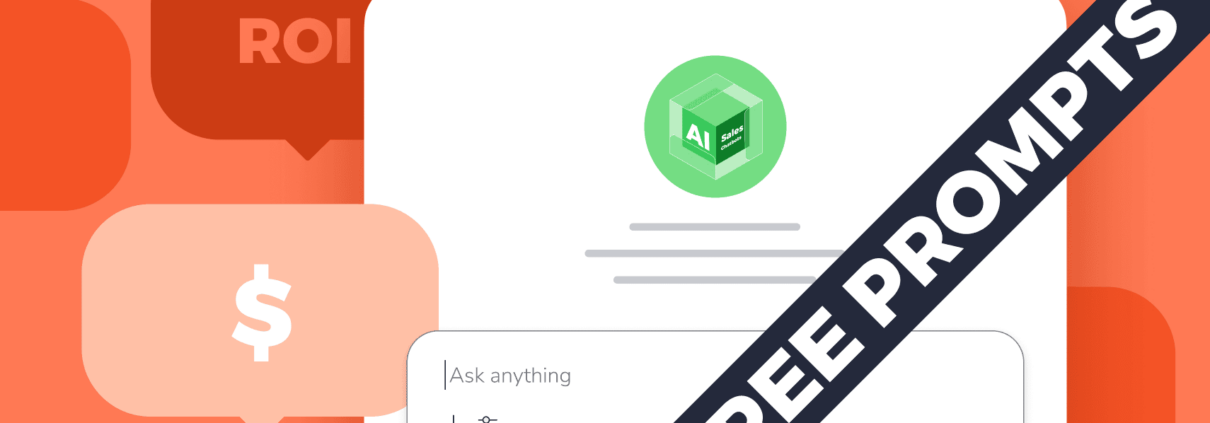12 Best Ways To Use ChatGPT in Sales (prompts inside) [2025]

Table of Contents:
Intro
Sales has always been a high-pressure game. I know from experience it can feel incredibly motivating if you’re hitting your targets, but also overwhelming when you try to juggle shifting customer expectations and an overflowing to-do list. Keeping up with everything can sometimes feel unrealistic, especially if you handle each process manually.
Maybe you’re unsure how to use ChatGPT in sales – or skeptical if it really “gets” how sales works. I think we all were initially. But here’s the good news: it can make a big difference.
It’s not about replacing the human touch, but giving the sales team a reliable assistant that helps with tasks like qualifying leads, writing emails, or prepping for calls. In this guide, I share 12 ready-to-use ChatGPT for sales prompts with practical examples. See for yourself how they could make your daily workflow smoother, more efficient, and simply a little less stressful.
Lead research & qualification
Every salesperson knows the pain of wasting time chasing the wrong leads. Having to manually check LinkedIn profiles, company pages, and news articles slows everything down. Frequently, gut feeling replaces real qualification.
With ChatGPT, you can automate and standardize your lead research, checking scattered data for signals of intent. These types of prompts help your team instantly assess fit against your ICP and surface outreach-worthy insights. This could become a repeatable way to identify the right opportunities faster by you and others on the sales team.
Prompt 1: Validating ICP fit
“Act as a B2B sales rep. Analyze this LinkedIn profile and tell me if the person fits our ICP [insert ICP details]. Also, suggest an opening line for outreach.”
Naturally, remember to provide the LinkedIn URL or copy/paste the person’s profile summary text.
Tip: Use this after viewing a profile but before sending a connection request. This way, your outreach will feel relevant, not random.
Example of output:
Let’s see how to use ChatGPT in sales when I want to qualify a potential lead. I told ChatGPT that my company’s ICP is an Operations Director at a mid-sized renewable energy firm specializing in solar, wind, or energy storage projects. They’re responsible for:
- smooth project delivery
- managing cross-functional teams
- optimizing internal processes as the company scales.
Their role is to:
- seek tools that improve resource allocation
- track compliance
- ensure real-time visibility across projects (especially when current systems are fragmented or manual).
I then ran the prompt against a real-life Operations Director I found on LinkedIn, who seemed to have met these criteria at first glance (note: I’ve anonymized their details person’s data). Here’s the output:
Prompt 2: Identifying key sales readiness signals
“Give me a list of 5 key signals to watch for on a company’s website or news updates that would indicate sales readiness for [insert your solution].”
Example of output:
I’m going to run this prompt and tell ChatGPT I’m a sales representative at an HR automation software company. Here’s the response:
Notice how all five of these key signals could get their own action plans and potential sales angles. You could also set up triggers for them in your CRM and sales automation tools.
For example, I asked ChatGPT what it recommends for the first point, i.e., rapid hiring. It suggested:
- personalizing my outreach referencing the hiring surge. For example, by asking how they’re managing onboarding and HR processes with the growing headcount.
- highlighting time savings and scalability benefits of implementing a tool like mine
- creating tags like “hiring spike detected” in my CRM, or an auto-alert if there are 10+ new job listings posted within 30 days.
Tip: As you can see, it makes sense to pair this with Google Alerts or LinkedIn updates for real-time trigger data.
Outreach & messaging personalization
Every sales leader hears it: “I don’t know what to say in this email” or “I sent a message, but no reply.” The challenge isn’t writing; it’s writing at scale without sounding robotic. These ChatGPT prompts help your team quickly generate relevant messaging that actually gets responses.
Whether it’s a cold email, LinkedIn DM, or follow-up, AI can provide structure and inspiration. Your reps will spend less time agonizing over wording and more time connecting.
Prompt 3: Creating a personalized cold email
“Write a personalized cold email to a [job title] at [company type/industry], highlighting how our [product/service] can solve [pain point]. Keep it under 100 words.”
Tip: Test 2-3 variations with different tones (e.g., friendly vs. direct) to see what resonates best with your audience.
Example of output:
I’m going to put myself in the shoes of a sales rep offering a cybersecurity tool. I’m asking for a cold email for a CTO at a Series B SaaS company. I want to highlight how our cybersecurity platform can reduce third-party risk and support SOC 2 compliance.
Here’s the output ChatGPT gave me with just this basic information:
Looking at this output, I know straight away what needs to be improved. For example, based on my sales experiences, I know that adding Series B congratulations in the first sentence likely won’t convince the person to open the message. It might even irritate them, as leaders are flooded with messages that have this opening line after securing funding.
I ran a follow-up prompt, explaining the above to ChatGPT. It not only gave me a more fitting version of the email, but also explained what exactly it did and how sales reps can pull relevant information:
The takeaway? You shouldn’t just tell ChatGPT what you’d like it to do; tell it what you know you don’t want. You’re the sales person who’s going to use the email, and you have a lot of contextual knowledge ChatGPT never will.
Prompt 4: Rewriting underperforming cold emails
“Rewrite this cold email to improve open and reply rates. Make it sound less generic and more engaging: [paste email].”
Example of output:
In this scenario, I’m a sales rep at a company offering workflow automation tools. One of my ICPs are legal teams, and here is the email template our sales team used:
Hi [First Name],
I wanted to introduce you to our platform, which helps legal teams automate contract workflows and improve turnaround time. Companies like X and Y use us to streamline legal requests and reduce admin work.
Let me know if you’re open to learning more.
Best,
[Rep Name]
ChatGPT told me it found the original email too formal and passive and that it lacked a compelling hook or specific benefit that would spark curiosity. Here’s the refined version:
This reframes it in a way that matches the busy, high-pressure reality of in-house legal teams. ChatGPT also told me that if it were given extra context on what exactly I’m selling, it could also improve the pitch.
Tip: Ask ChatGPT to also generate subject line options and preview text. It’s often half the battle for open rates.
Sales call preparation & objection handling
Walking into calls unprepared is a silent (or maybe not-so-silent) killer of deals. Unfortunately, I feel that it happens more often than managers like to admit.
When reps don’t anticipate questions or freeze at objections, it erodes buyer trust. These types of ChatGPT prompts for sales teams can help counter that.
Your team can use them to prep smarter, with tailored questions and objection rebuttals based on your product and industry.
Prompt 5: Listing questions for discovery call
“I’m having a discovery call with a [job title] from [company type] about [product/service]. What are 5 smart questions I should ask to uncover pain points?”
Tip: Request questions based on your sales methodology (e.g., SPIN, Challenger, MEDDIC) to align with your team’s approach.
Example of output:
Here’s the scenario I went with:
“I’m having a discovery call with a Design Director at a digital marketing agency about my company’s visualization board. What are 5 smart questions I should ask to uncover pain points? I’d like questions to be based on the Challenger sales methodology.”
ChatGPT suggested the following:
Notice how it gave me reasoning for each question, so I know when to best ask them.
Prompt 6: Learning about top objections common for my ICP
“What are the top objections I might hear when selling [your product] to [industry]? Give me clear rebuttals I can use in a conversation.”
Tip: Ask for both short rebuttals (for live calls) and longer ones (for email follow-ups).
Example of output:
Here’s the scenario I ran: “What are the top objections I might hear when selling a project management tool to creative agencies? Give me clear rebuttals I can use in a conversation, and longer versions I can use in email follow-ups.”
ChatGPT gave me a list of top three objections along with potential actions I could take to counter them:
- “We already use another tool”.
- “It’s too expensive”.
- “Our team won’t want to switch again”.
Proposal & deal support
You’ve invested time and energy into a deal only for it to stall at the finish line. Can you relate? Whether prospects need reassurance or have gone cold, closing requires the right message at the right time.
These prompts help reps create persuasive follow-ups, recap value, and re-engage leads without sounding pushy. It’s not just about sending more messages; it’s about sending the right ones that reignite momentum. Sales managers can use these to coach smarter and help their teams close with precision, not pressure.
Prompt 7: Proposal summary email copy
“Create a proposal summary email for a client who’s 80% ready to buy our [solution], but wants final reassurance on ROI. Make it persuasive but not pushy.”
Tip: Use this right after a call to keep momentum going while details are still fresh in the buyer’s mind.
Example of output:
This email pulls together everything we’ve agreed on so far, while also reminding the prospect of the real benefits the tool brings. It helps keep the value fresh in their minds. It also reassures them that we’re a strong fit by pointing to a company a lot like theirs in size and setup, and how it saw real ROI after using the tool. It makes the case feel not just solid, but relatable and proven.
Prompt 8: Follow-up message to a lead that went silent
“Draft a follow-up message for a lead who went cold after our last proposal. Use a value-driven and non-salesy tone.”
Tip: Ask ChatGPT to include a subtle CTA, like sharing a recent case study or inviting them to a quick strategy call.
Example of output:
Just like in other situations, the more context you can give ChatGPT about the lead who’s gone quiet, the better. It’ll help craft a much more convincing and tailored message.
CRM & data entry automation
No one gets into sales to update CRMs, but clean data is what drives forecasting, coaching, and scale. The reality? Most reps either do it inconsistently or not at all. These prompts help automate the grunt work, summarizing messy call notes, structuring pipeline updates, and ensuring follow-ups are logged (in short, all the tasks that sales reps don’t like doing).
ChatGPT for sales becomes your team’s virtual assistant, saving time while improving data hygiene. Sales managers get better visibility, reps get more selling time, and everyone wins.
Prompt 9: Call transcript summary with key takeaways
“Summarize the following call transcript into CRM-ready notes including client pain points, next steps, and timeline: [paste transcript or notes].”
Tip: Ask for a version that includes sales stage progression (e.g., “Move to: Proposal Stage”) for easier pipeline updates.
Example of output:
Here, we’re looking at a scenario of a 30 minute sales call with a VP of Operations at a logistics company. I uploaded the transcript into ChatGPT. The goal for me here is to use the information for the call to move to the “Proposal stage” post-call.
This gives us a good overview of what the call was about. We can literally copy paste these notes into the CRM.
Prompt 10: Structuring sales notes into a CRM format
“Turn these messy sales notes into a clean, structured update for our CRM (Company, Contact, Stage, Summary, Next Steps): [paste notes].”
Tip: Use this at the end of the day to clean up deal notes in bulk, your future self (and manager) will thank you.
Example of output:
Let’s assume one of the tens of notes I have look the following way: “Talked to Sarah (Director of IT) @[Company Name] Thurs – said they’re sick of managing inventory manually – they’re using spreadsheets now – asked about API access – looking at Q3 rollout – seemed pretty interested – will talk to CFO about budget – wants proposal by next week”.
Did you catch how it offered to put everything into a spreadsheet format? That can be super handy if you want to avoid the hassle of copy-pasting into the CRM.
Sales strategy & team coaching
As a sales leader, you’re constantly pulled between hitting short-term targets and building long-term team performance. But coaching often takes a backseat to urgency. These prompts turn ChatGPT into a strategy assistant helping you analyze performance data, spot patterns, and generate actionable ideas to improve win rates. It’s like having an extra set of eyes and a fresh brain in your 1:1s or pipeline reviews.
With AI-powered insights, you can coach with more clarity, tailor feedback to each rep, and align the whole team toward scalable growth.
Prompt 11: Sales coaching assistant
“Act as a sales coach. Analyze this team’s last quarter performance data and suggest 3 actionable ways to improve our conversion rate: [insert data or bullet points].”
Tip: Include data from different reps or stages to get suggestions on both individual coaching and pipeline optimization.
Example of output:
I’m going to assume that I have three reps whose performance I want to analyze and also give ChatGPT our win rate and deal cycle length. Here’s what I gave it for context:
Rep A: 100 leads → 20 demos → 1 closed deal
Rep B: 80 leads → 18 demos → 4 closed deals
Rep C: 120 leads → 30 demos → 2 closed deals
Common drop-off: Discovery → Proposal stage
Avg. deal cycle: 38 days
Win rate: 7%
And here’s the output:
This makes a great conversation starter, it clearly shows where each rep could improve. Plus, ChatGPT for sales doesn’t just point out the gaps. It also suggests practical ways to fix them, which can really help motivate reps to level up.
Prompt 12: Finding ideas on optimizing B2B sales with AI
“What are 5 AI-powered tactics that B2B sales teams are using to improve win rates in 2025? Summarize them with examples.”
Tip: Ask ChatGPT to categorize them into: Prospecting, Engagement, Forecasting, or Automation so it’s easier to apply.
Like a lot of the earlier outputs, this is a solid starting point. The more background you give it – like who your team is and what you’re offering – the more tailored and on-point the recommendations will be.
From one-off wins to scalable sales success – Why ChatGPT + Livespace CRM is the smarter combo
While ChatGPT for sales can help you quickly generate high-quality sales content like emails, call scripts, or objection-handling responses, real sales performance comes from repeatability and structure, not isolated moments of brilliance.
That’s where Livespace CRM comes in.
The biggest challenge in B2B sales isn’t writing one great follow-up email or preparing for a single discovery call. It’s building a repeatable sales process where every team member knows what to do, when to do it, and how to consistently move deals forward. ChatGPT excels at helping you with individual sales tasks, but Livespace turns those individual wins into a coordinated, data-driven system that improves over time.
Unlike other CRMs that bolt on generic AI features, Livespace takes a “process-first” approach ensuring your pipeline, workflows, and performance metrics are tightly aligned with your actual sales goals. Then, targeted AI tools (like smart recommendations or content suggestions) are layered on to amplify what’s already working.
Think of it like this:
- ChatGPT is your execution assistant.
- Livespace is your sales operating system.
Together, they help you do better work and build a better system so your team stops relying on individual heroics and starts delivering reliable, scalable results.
Check out how Livespace CRM can help improve your sales process – and while you’re at it, grab our free guide: “5 Must-Have GPTs for Sales Teams.” It’s a quick read with actionable tips to boost productivity from day one.
Other posts

The Beginner’s Guide to Sales Forecasting (For Sales Directors & Managers)

How to shorten the sales cycle in 9 easy steps













![[alt] ChatGPT in sales; objection I can handle via email or over a live interaction](https://www.livespace.io/wp-content/uploads/2025/05/image12.png)







